Capitalism
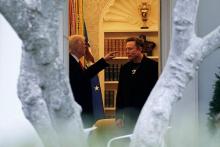
Since arriving to the White House, the richest man in the world, Elon Musk, has been on a destructive whirlwind through the federal government. At the behest of President Trump, the South African billionaire and chief of the Department of Government Efficiency has led an effort to illegally gut numerous federal agencies, fire tens of thousands of federal workers, and perpetrate fraud while claiming to root it out.
Regarding the seemingly intentional turmoil of Musk’s actions, Trump bragged at the Conservative Political Action Conference that his administration had “effectively ended the left-wing scam known as USAID. The agency’s name has been removed from its former building, and that space will now house agents from Customs and Border Patrol.” Taken alone, these actions have the makings of an oligarchic heist or a coup that cripples the government’s capacity to provide and protect public goods.
But within a wider aperture of the administration’s priorities — ripping apart families, hoping to establish concentration camps, offering refugee status to white Afrikaners, attacking trans people, and engaging in a “war on woke” across institutions — a coherence comes into focus amid the chaos. These are men who destroy to build a racial hierarchy in service of their own wealth and profit. Or as political commentator Elie Mystal of The Nation has framed it, they are bringing a “a neo-apartheid economic agenda to the US government.”

Similar to Parasite, Mickey 17 is ultimately about the ethics of revolutionary struggle. The film considers how Christian morality — especially as understood by thinkers like Friedrich Nietzsche, Michel Foucault, or Karl Marx, the latter of whom famously referred to religion as the “opiate” of the masses — prevents the downtrodden from standing up for their rights. Here, Pattinson’s Mickey is a clear stand-in for Christ and the model Christian. Resurrected ad infinitum, he humbly accepts the pain, suffering, and dehumanization inflicted on him by his apathetic, at times downright demonic coworkers as punishment for his perceived sins.
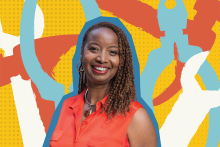
Brenda Salter McNeil is an ordained minister in the Evangelical Covenant Church, associate professor of reconciliation studies at Seattle Pacific University, and the author of multiple books on the topic of racial reconciliation. McNeil is acutely aware of critical attitudes toward racial reconciliation and is seeking to emphasize the importance of reparations and intersectionality in her new book, Empowered to Repair. I sat down with McNeil to talk about reconciliation, Obama, and Black support for former president Donald J. Trump.
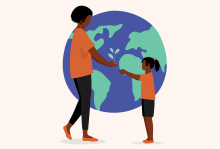
IT'S PARTLY THE times and partly my own overthinking, but lately my mind keeps going toward the ways it could all fall apart. American democracy feels fragile, like a teacup on a saucer that’s partly hanging over the table’s edge. And companies and governments, though fully aware of what they’re doing, continue to tug voraciously at the threads that hold our ecosystems together, permitting more pipelines and drilling and business as usual.
Some have called our current era “the dying gasps” of late capitalism. The bubble of exponential economic growth, powered by the extraction of millions of years of decayed organic matter stored as carbon-rich fuel beneath the ground, can’t last forever. Neither can our living beyond the Earth’s means, though the endless options on e-commerce sites suggest otherwise.
It is too easy to surround myself with shiny new things to ease the sense that the world as we know it is ending, to buffer my sense of self with what feels familiar and safe. But then I wouldn’t be awake to what is being birthed in the wake of the dying colonial project. As much as it’s terrifying and full of risks, I want to get my hands dirty in the collective creation of a better world.

Both films are sympathetic to creators, but neither film lets their creations off the hook. Oppenheimer worries aloud how the nuclear power he unleashed will shape the atomic age. Barbie faces a lunch table of schoolgirls who tell her exactly how the Barbie beauty standards made them feel un-feminine. But both films ultimately move beyond the myth of the single creator and focus on the forces that shape that creation’s ongoing impact on the larger world.
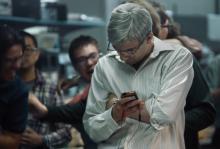
Capitalist Cautionary Tale
BlackBerry highlights the role of greed in capitalism through the story of the rise of the BlackBerry smartphone. The film, which transports us to a time when smartphones weren’t omnipresent fixtures in our lives, shows the danger of valuing innovation more than ethics.
Elevation Pictures
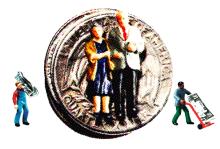
MATTHEW DESMOND, a Princeton sociologist and author, has grown tired of calls to reduce poverty — because he knows we can abolish it. In his new book, Poverty, by America, Desmond explores not the lives and struggles of people who are poor — but poverty, and the conditions that cause it. And Desmond contends that the lives the rest of us live are often connected to the conditions that cause poverty.
“To understand the causes of poverty, we must look beyond the poor. Those of us living lives of privilege and plenty must examine ourselves,” Desmond writes. “Are we — we the secure, the insured, the housed, the college educated, the protected, the lucky — connected to all this needless suffering?”
Desmond is the son of a pastor, and his work is rich with spiritual metaphor and flare while grounded in the material realities of poverty and the conditions that cause it. He dedicates a chapter of his book to refuting the idea that “neoliberal” cuts in welfare spending are to blame for poverty. “There is no evidence that the United States has become stingier over time. The opposite is true,” he writes. Instead, the problem is “a fair amount of government aid earmarked for the poor never reaches them.” Sojo.net associate news editor Mitchell Atencio spoke with Desmond about his new book, community building, and capitalism. —The Editors
Sojourners: Theologian Gustavo Gutiérrez defines poverty as “premature and unjust death,” saying that “the poor person is someone who is treated as a non-person, someone who is considered insignificant from an economic, political, and cultural point of view.” Is that a good way to describe poverty?
Matthew Desmond: I think that’s a factual way to describe what poverty is. Between 2001 and 2014, the richest women in America gained three years of life and the poorest women gained 15 days. So, poverty is death. There was a study that came out very recently that showed that one of the leading causes of death in the United States is poverty. I think that when we deny people access to basic needs, and we deny them basic economic security in this rich land, we do deny them life and happiness itself.
The other part of the quote about insignificance is very interesting because it does seem that in our popular culture — our TV shows, our movies, our children’s books — there are often no portrayals of real poverty in those media, and so it’s kind of amazing how seamlessly the poor can be erased from everything we’re reading and watching and reading to our kids.
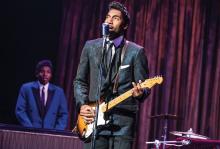
BEFORE HE STEPS onstage as Ike Turner in TINA: The Tina Turner Musical, Garrett Turner (no relation) does a simple ritual: He swirls a wooden mallet along the rim of a Tibetan singing bowl. As the sound washes over him, he focuses on himself as Garrett, not Ike the musician and abusive ex-husband of the “Queen of Rock ’n’ Roll.” And he prays.
“Tina found Buddhism on her way to liberation from Ike, and it was something that Ike decried,” Garrett told me a few days after I saw him perform in Atlanta. Embracing something that Ike pushed away helps Garrett become Ike onstage while remaining Garrett within. With eight shows a week for the touring Broadway production, this spiritual practice helps Garrett draw a clear line between himself and the broken man he portrays.
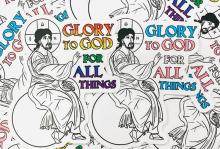
ACCORDING TO AN Orthodox miracle story, St. Nicholas — the fourth century archbishop who inspired the figure of Santa Claus — quieted a raging sea. When sailors were caught in a storm on the Mediterranean, they called out for help. Nicholas appeared, walking on the waves before them. He blessed the ship, and the storm calmed. This is why he became the patron saint of sailors. It’s also why Mary Marza, a queer Orthodox artist in her mid-20s who is based in Los Angeles, illustrated St. Nicholas as a “waterbender.” Waterbenders, from the animated series Avatar: The Last Airbender, can control water and its movements. This is one of many works featured on her Instagram art account, Art of Marza.
“I liked the concept of blending saints with the elements or just blending the saints with things from my favorite stories and pop culture,” Marza wrote in an Instagram caption about this portrayal of St. Nicholas.
Marza (who asked to use her art account name instead of her real last name for this article) creates digital art and stickers that blend Orthodox iconography and prayer with street art and anime. The grungy, graffiti-and-animation-inspired aesthetic of her art and its confluence with iconography is part of her longing to “[see] God in places where people assume we can’t find Him,” she wrote on Instagram.
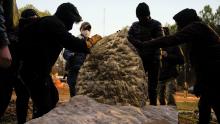
"COP CITY" IS A PLAN to raze 381 acres of forest land in Atlanta and convert it into a massive police training facility that would cost $30 million in public money and $60 million in private. It’s called Cop City because the plans include a mock city inside with things like a playground, school, gas station. All places that cops can train and simulate the things they do. It faced a ton of opposition from a wide range of organizations when it went public in 2021 — and really brought on people at different levels, including climate change and environmental preservation. The private money involved is from a lot of Georgia corporations — Coca-Cola, UPS, Home Depot — and it’s all being run through the Atlanta Police Foundation, the nonprofit entity that the city leased this land to. On the day of the vote, there were 17 hours of public comment against it. The Atlanta City Council approved the plan.

The 1992 classic is full of wonders you can’t find anywhere else: Michael Caine starring in a children’s movie, a ghost of Christmas future that haunts me every time I consider splurging on frivolities, and a drum set at a Victorian England Christmas party. But the movie isn’t just a fun, Muppet-y take on Charles Dickens’ classic novella; it’s also a compelling screenplay with heart-warming, humorous songs that offer a radical Christmas message of “cast down the mighty … send the rich away empty.”
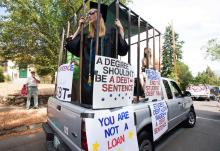
During my time in college and graduate school, I accumulated something like $50,000 in debt. So, you’d imagine I would be particularly excited about the prospect of Biden forgiving some of my debt. But I already paid off my student loans! Does that mean I rue others getting theirs forgiven? No! I am happy that other people may receive debt forgiveness even if it doesn’t apply to me.
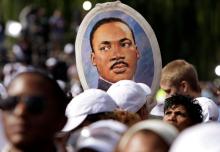
In order to understand King's life and legacy, it is critical that his activism be understood in the context of his call as a minister. In 1956 a sermon titled, “Paul's Letter to American Christians,” King called for a “better distribution of wealth.” He also asserted that “God never intended one people to live in superfluous inordinate wealth, while others live in abject deadening poverty.” Holistically interpreting King’s theological work as a pastor, public theologian, and faith leader requires grounding his anti-capitalism in his self-identification as a “minister of the Christian gospel.”
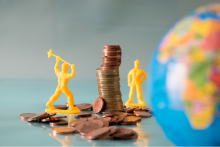
If you’ve heard white evangelical pundits lately, you’ll know there’s a dangerous “new” enemy threatening U.S. Christianity. If left unchecked, they say, this enemy will wreak havoc on traditional values and transform our entire nation into atheists. What is this growing enemy of evangelicals? Democratic socialism.

I GREW UP IN Guatemala, a country where the Indigenous people make up more than 50 percent of the population. I was told growing up that my ancestors were Europeans (Spaniards and Italians). Even though I was identified as ladino (not Indigenous) by Guatemalan official nomenclature, I was attracted to Mayan languages and communities (K’iche’, Kaqchikel, and Q’eqchi’, among others).
I felt a resonance with their orientation toward the earth, their deep sense of communal cohesion, and their mystical world of ancestral spirits. After doing some genealogical work, I learned that one of my grandfathers was Mayan.
I began to notice practices and attitudes in my family that I was certain were of Indigenous origins: my dad’s idiosyncratic disregard for manufactured material goods in favor of plants; my uncle’s pouring of alcohol on the floor before serving a drink; my mom’s smoking of cigars as an invitation to the spirits and San Simón to be with us in our gatherings. All have an Indigenous provenance.
As I learned more, I recognized those familial practices as part of a millennia-old cosmovision and mindset, a way of viewing the cosmic order of a civilization through which Indigenous peoples organize everyday activities, even today. Each is a theo-ethical gesture for safeguarding their relationship with life itself, in all life’s diversity.
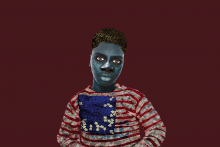
IF YOU EXPECT a column about art, you may have turned to the wrong page. Though I would very much like to be writing about aesthetics, I’m afraid I cannot do so outright. The problem is simple: Our world is on fire, has been for a very long time, and we can no longer afford to avoid the why. Our country looks in the mirror and cannot recognize its face because its self-concept is built on lies. To be an American, it seems, is to be in a state of constant dissociation. Perhaps that is the fine print in our social contract—mandated distance from our inner worlds and the violence we inflict on each other.
But, if we are constantly looking away from ourselves, what are we looking at instead? The answer is, again, simple. We—this “we” primarily composed of white people—have traded a clear vision of reality away for the tawdry allure of images. Put frankly, we worship a portrait of America that has not yet come into being.

Today's economic demons resemble the 'Panic of 1893.'
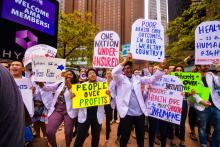
“Every week, almost daily, I see patients who cannot afford care, can’t afford their medication."

Shall Christ or Cain reign in our American civilization?
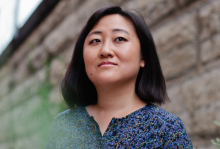
“AFTER THE END came the Beginning.” This is how we enter the world of Ling Ma’s debut novel Severance: in the liminal space between end and possibility. In a narrative that alternates between aftermath and memory, we find a stark reflection of our present.
Protaganist Candace Chen works for a book production company, and her specialty is the acquisition of Bibles. Tedious office work. She has lost her parents, recently left a relationship, and lives alone in Manhattan when news of a spreading illness—Shen Fever—erupts. The fever begins in China, in a region that produces the Gemstone Bible, one of Candace’s specialty Bibles. Before and during this outbreak, work, for Candace, is at once sustenance and distraction.
Who can live outside capitalism? Jonathan, Candace’s ex, certainly tries. But that is not the life Candace wants—or, rather, that is not the life her immigrant parents raised her to want.